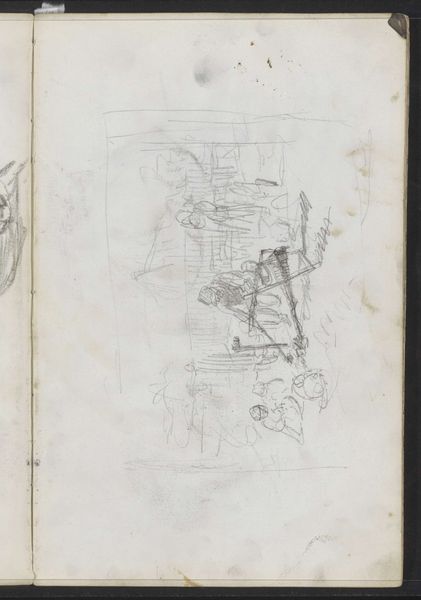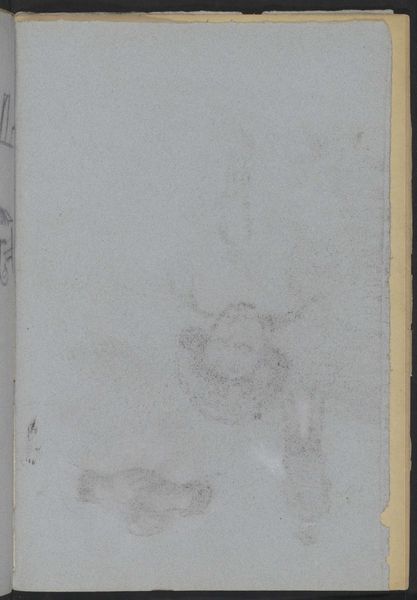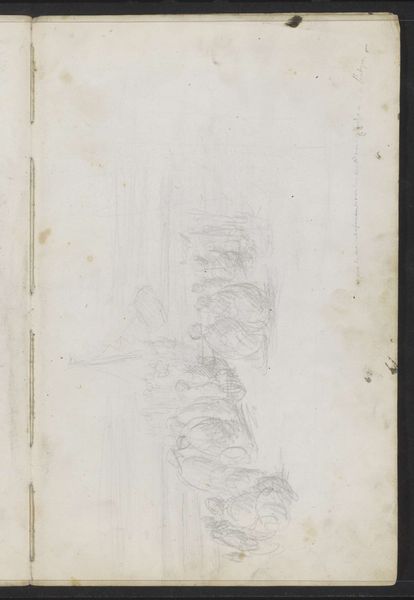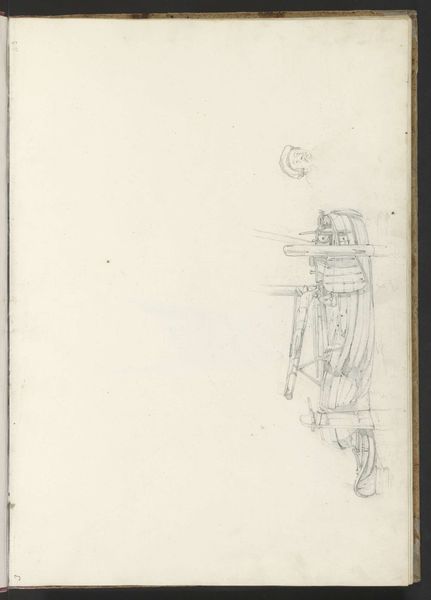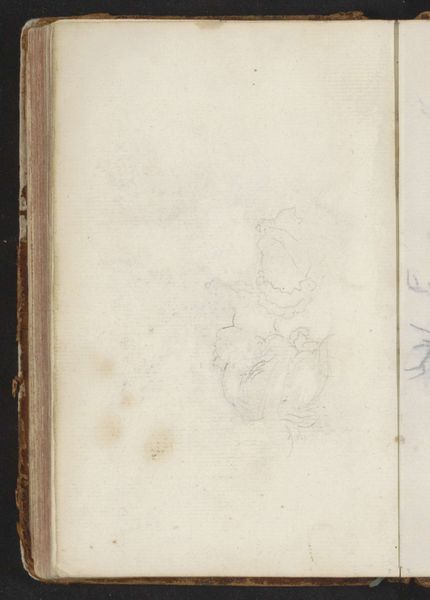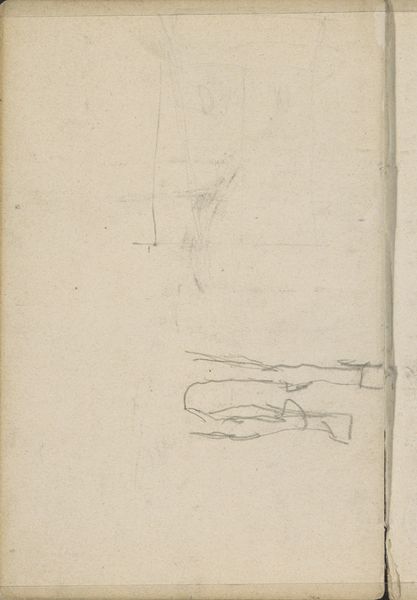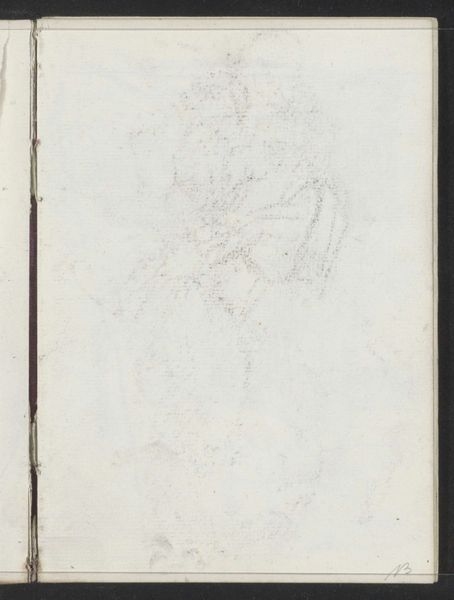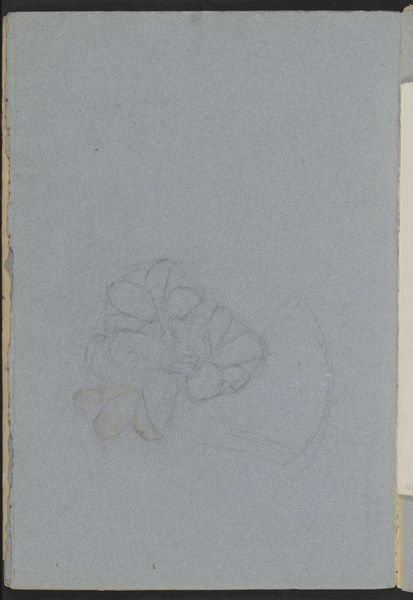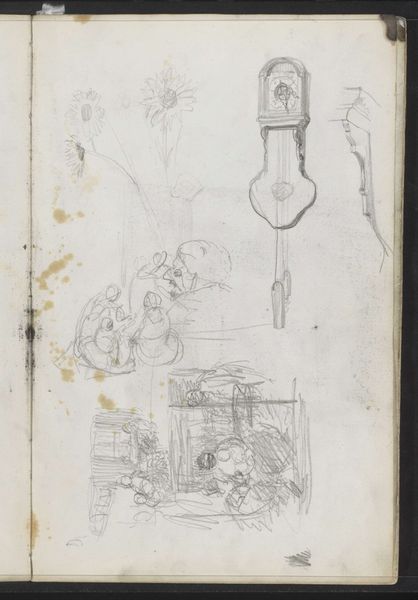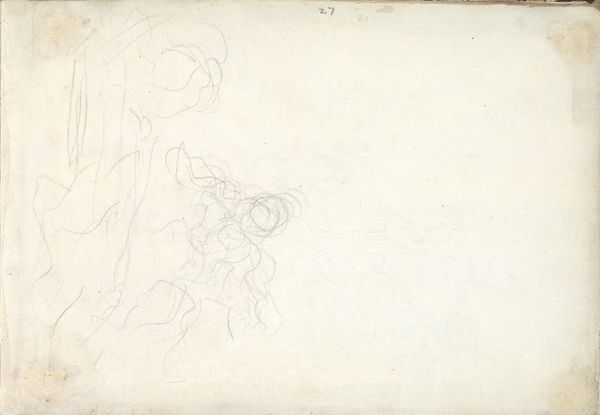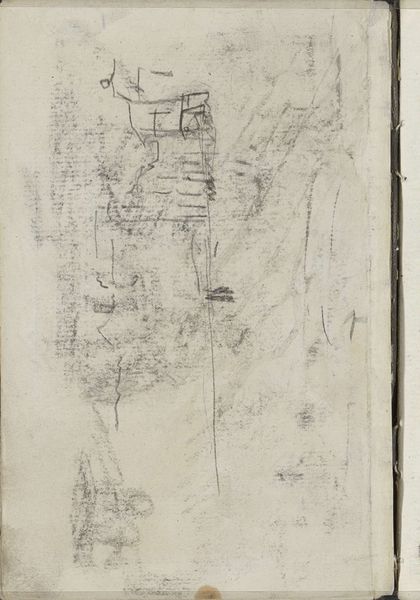
drawing, paper, pencil
#
drawing
#
landscape
#
paper
#
coloured pencil
#
pencil
Copyright: Rijks Museum: Open Domain
Curator: I'm immediately drawn to the subtle balance between the spare lines and the density within the subject of this sketch. Editor: Indeed. We’re looking at Jozef Israëls' “Kar met vier wielen,” a drawing, likely done between 1855 and 1859. It is a pencil and colored pencil study on paper, here at the Rijksmuseum. The work evokes the hardscrabble lives of rural communities during that period. Curator: The very sparseness contributes to the emotional register. The implied, negative space creates a world of poverty and endurance for the cart's handlers and passengers. I imagine the artwork reflects the era’s shifting socioeconomic structures and the plight of many farmers. Editor: But note how the circularity of the wheels contrasts with the more angular construction of the cart's body, and even the artist's broader strokes, introducing dynamism into an otherwise static scene. This kind of geometric play provides tension and depth within a seemingly simple composition. Curator: And those are structural forces tied intimately to political questions about the distribution of labor! Who is pushing or being carried? It's worth remembering the rigid hierarchies of the era that placed these communities on the margins of Dutch society. Editor: Certainly, and by employing the linear technique in such an unembellished manner, the materiality directs the attention straight to form, making us notice line, shadow, and space rather than narrative embellishment. Curator: Though one must note the near-ghostly presence of an implied second structure on the lower portion of the paper: the marks of an absence. An absence or discarding can communicate loss and trauma just as directly as a completed rendition. What’s outside the boundaries matters, and what has been erased, too. Editor: Well said. Israëls’ formal decisions resonate as more than simple visual data. They become an entryway to an experience—not just an intellectual concept of one. Curator: To approach a deeper knowledge of Israëls through art requires engagement with history. In so doing, we expand our notions of social justice through the ages. Editor: And engaging with the structures provides insight into the composition that gives “Kar met vier wielen” such communicative power.
Comments
No comments
Be the first to comment and join the conversation on the ultimate creative platform.
